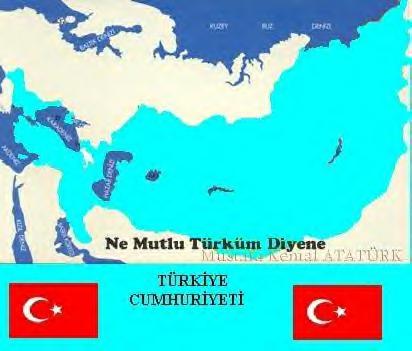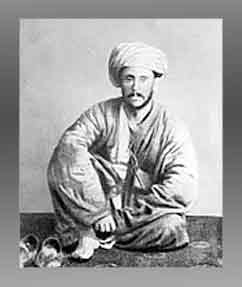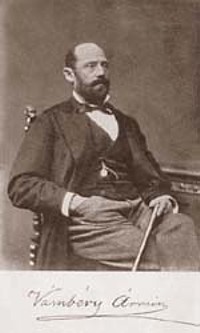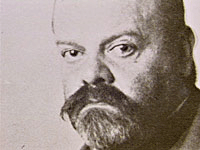Кто и как породил "пантюркизм" и рухал Оттоманскую Империю
What is pan-Turanianism?
Simply put, pan-Turanianism is an ideology that aims at creating a Turkic super state stretching from the Balkans in Europe, eastwards across Turkey, Iran (Persia), the Caucasus, Central Asia up to and including northwest China (see map below):

The logic behind this is that all people who speak Turkish must be incorporated into this Turkic super state (see also Atabaki, 2001, Landau, 1995, Zenkovsky 1960 and Lewis, 1962 in References).
Hungarian pan-Turanianist activists go even further. They have proposed that the entire Eurasian landmass between Hungary and Norway in Europe to Japan and Korea was once an empire known as “Turania”. Apart from non-scholastic websites, no linguistic, anthropological and archeological evidence for such an empire exists. Pan-Turanian racialists and historians would beg to differ. They are impervious to logical explanations even in the face of hard evidence. Such is the case of all who are infected with the virulent virus of racialism (see C. Richards, 1997 and J. Searle-White, 2001 in References).
Pan-Turanianism, like Nazi “racial sciences”, or Stalinist “History”, has failed to convince the majority of western scholarship to its cause, and has been as equally unsuccessful in Eastern Europe, with the exception of Hungary and the Republic of Azerbaijan.
Much of pan-Turanian ideology is similar to pan-Germanic racism and Nazism; philosophies from which the Grey Wolves and pan-Turanian ideologues have drawn much of their inspiration (see Parts III & IV). Like the Nazis in the 1930s and 1940s, the pan Turanian Turks envision their Turan super-state (like the Nazi “Germania”), in terms of “lebensraum” (German for “living space”) for all Turkic speaking peoples. The late president of the Republic of Azerbaijan, Abulfazl Elchibey (1938-2000), a Grey Wolf sympathizer himself (see Part II, item 4), is reputed to have stated that “… the road to Turkistan runs through Tabriz”. Tabriz has been an integral part of Persia for thousands of years.
(1) A Brief Note on the Origins of Pan-Turanianism.
Pan-Turanianism is perhaps one of the last racialist movements that first began in the 19th century. Traditional history cites its early origins amongst Ottoman officers and intelligentsia studying and residing in 1870s Imperial Germany. The fact that many Ottoman Turkish officials were becoming aware of their sense of “Turkishness” is beyond doubt of course, and the role of subsequent nationalists, such as Ziya Gokalp (see Part II, item 7a) is fully established historically.
What is far less known (or acknowledged) is the role of foreign (non-Turkish) interests in the manipulation of the Turks to service wider geopolitical interests. It is truly an irony that the idea of a Turanian empire never originated amongst the Ottoman Turks, but by a man of Jewish descent. His name was Arminius (Hermann) Vambery (Wamberger) (1832-1913), a Hungarian Professor, philologist and traveler who worked an as advisor to the Ottoman Sultan between 1857-1863
About Vambery: http://en.wikipedia.org/wiki/%C3%81rmin_V%C3%A1mb%C3%A9ry
(see Vambery in Ottoman dress at left - European attire at right):


Vambery was in the employ of Lord Palmerston of the British Foreign office. It was during his tenure at the Sultan’s court when Vambery first made mention of the fiction of a pan-Turanian superstate to his Turkish hosts in Istanbul:
"… they (the Turks) could form a political entity stretching from the Altai Mountains in Eastern Asia to the Bosphorus…"
[Paksoy, H.B., ‘Basmachi’: TurkestanNational Liberation Movement 1916-1930s.
In Modern Encyclopedia of Religions in Russia and the Soviet Union, Florida: Academic International Press, 1991, Vol. 4].
Vambery’s thesis was based on the observation that as much of Central Asia used Turkic languages as their main vernacular (except Persian speaking Tajikestan), this then necessitated the formation of “Turan”.
It has been speculated that Vambery’s mission was to create an anti-Slavic racialist movement among the Turks that would divert the Russians from the “Great Game” which they were playing against Britain in Persia and Central Asia
(see also S. A. Zenkovsky in References).
Vambery retired as a professor of eastern languages at the University of Budapest between 1865-1905. He wrote many books on his travels to Turkey, Armenia, Persia and Central Asia. His expertise on languages and ethnology served the British Foreign Office very well indeed: a racialist idea was formed that would allow for the European manipulation of the Turks for a very long time to come.
...
Vladimir Jacobsky became the editor of the Young Turk Newspaper (the owner of the paper was of course Turkish). Jacobsky had been educated in Italy, and despite much hype and speculation, his links with foreign intelligence organizations remain unclear. The editorial content of the Young Turk Newspaper was also overseen by a Dutchman by the name of Jacob Kann. Kann was intimately connected to the Dutch government; he conducted the personal banking of the king and queen of Holland.

The economics editor of another Young Turk newspaper, The Turkish Homeland, was overseen by Alexander Helphand Parvus (1869-1924), reputed to have been a double agent (Russian and British).
(ТОТ САМЫЙ ПАРВУС, КОТОРЫЙ ДАЛ НЕМЕЦКИЕ ШЭКЕЛИ ДЕДУШКЕ БЛАНКУ! - X. H.)
http://en.wikipedia.org/wiki/Alexander_Parvus
There has been speculation of Parvus being involved in arms smuggling for the Turkish army during the Balkan wars (before World War One). See Zeman & Scharlau in references for further details.
_______________________________
Dr. Kaveh Farrokh, "PAN-TURANIANISM TAKES AIM AT AZERBAIJAN: A Geopolitical Agenda"
PART I: A SHORT INTRODUCTION TO PAN-TURANIANISM
http://www.rozanehmagazine.com/NoveDec05/AzarbayeganPart1.html
Бонус: Об Израиле Гельфанде/Парвусе - спонсоре русского, германского и турецкого бунтов: http://hojja-nusreddin.livejournal.com/2888199.html
Simply put, pan-Turanianism is an ideology that aims at creating a Turkic super state stretching from the Balkans in Europe, eastwards across Turkey, Iran (Persia), the Caucasus, Central Asia up to and including northwest China (see map below):
The logic behind this is that all people who speak Turkish must be incorporated into this Turkic super state (see also Atabaki, 2001, Landau, 1995, Zenkovsky 1960 and Lewis, 1962 in References).
Hungarian pan-Turanianist activists go even further. They have proposed that the entire Eurasian landmass between Hungary and Norway in Europe to Japan and Korea was once an empire known as “Turania”. Apart from non-scholastic websites, no linguistic, anthropological and archeological evidence for such an empire exists. Pan-Turanian racialists and historians would beg to differ. They are impervious to logical explanations even in the face of hard evidence. Such is the case of all who are infected with the virulent virus of racialism (see C. Richards, 1997 and J. Searle-White, 2001 in References).
Pan-Turanianism, like Nazi “racial sciences”, or Stalinist “History”, has failed to convince the majority of western scholarship to its cause, and has been as equally unsuccessful in Eastern Europe, with the exception of Hungary and the Republic of Azerbaijan.
Much of pan-Turanian ideology is similar to pan-Germanic racism and Nazism; philosophies from which the Grey Wolves and pan-Turanian ideologues have drawn much of their inspiration (see Parts III & IV). Like the Nazis in the 1930s and 1940s, the pan Turanian Turks envision their Turan super-state (like the Nazi “Germania”), in terms of “lebensraum” (German for “living space”) for all Turkic speaking peoples. The late president of the Republic of Azerbaijan, Abulfazl Elchibey (1938-2000), a Grey Wolf sympathizer himself (see Part II, item 4), is reputed to have stated that “… the road to Turkistan runs through Tabriz”. Tabriz has been an integral part of Persia for thousands of years.
(1) A Brief Note on the Origins of Pan-Turanianism.
Pan-Turanianism is perhaps one of the last racialist movements that first began in the 19th century. Traditional history cites its early origins amongst Ottoman officers and intelligentsia studying and residing in 1870s Imperial Germany. The fact that many Ottoman Turkish officials were becoming aware of their sense of “Turkishness” is beyond doubt of course, and the role of subsequent nationalists, such as Ziya Gokalp (see Part II, item 7a) is fully established historically.
What is far less known (or acknowledged) is the role of foreign (non-Turkish) interests in the manipulation of the Turks to service wider geopolitical interests. It is truly an irony that the idea of a Turanian empire never originated amongst the Ottoman Turks, but by a man of Jewish descent. His name was Arminius (Hermann) Vambery (Wamberger) (1832-1913), a Hungarian Professor, philologist and traveler who worked an as advisor to the Ottoman Sultan between 1857-1863
About Vambery: http://en.wikipedia.org/wiki/%C3%81rmin_V%C3%A1mb%C3%A9ry
(see Vambery in Ottoman dress at left - European attire at right):


Vambery was in the employ of Lord Palmerston of the British Foreign office. It was during his tenure at the Sultan’s court when Vambery first made mention of the fiction of a pan-Turanian superstate to his Turkish hosts in Istanbul:
"… they (the Turks) could form a political entity stretching from the Altai Mountains in Eastern Asia to the Bosphorus…"
[Paksoy, H.B., ‘Basmachi’: TurkestanNational Liberation Movement 1916-1930s.
In Modern Encyclopedia of Religions in Russia and the Soviet Union, Florida: Academic International Press, 1991, Vol. 4].
Vambery’s thesis was based on the observation that as much of Central Asia used Turkic languages as their main vernacular (except Persian speaking Tajikestan), this then necessitated the formation of “Turan”.
It has been speculated that Vambery’s mission was to create an anti-Slavic racialist movement among the Turks that would divert the Russians from the “Great Game” which they were playing against Britain in Persia and Central Asia
(see also S. A. Zenkovsky in References).
Vambery retired as a professor of eastern languages at the University of Budapest between 1865-1905. He wrote many books on his travels to Turkey, Armenia, Persia and Central Asia. His expertise on languages and ethnology served the British Foreign Office very well indeed: a racialist idea was formed that would allow for the European manipulation of the Turks for a very long time to come.
...
Vladimir Jacobsky became the editor of the Young Turk Newspaper (the owner of the paper was of course Turkish). Jacobsky had been educated in Italy, and despite much hype and speculation, his links with foreign intelligence organizations remain unclear. The editorial content of the Young Turk Newspaper was also overseen by a Dutchman by the name of Jacob Kann. Kann was intimately connected to the Dutch government; he conducted the personal banking of the king and queen of Holland.

The economics editor of another Young Turk newspaper, The Turkish Homeland, was overseen by Alexander Helphand Parvus (1869-1924), reputed to have been a double agent (Russian and British).
(ТОТ САМЫЙ ПАРВУС, КОТОРЫЙ ДАЛ НЕМЕЦКИЕ ШЭКЕЛИ ДЕДУШКЕ БЛАНКУ! - X. H.)
http://en.wikipedia.org/wiki/Alexander_Parvus
There has been speculation of Parvus being involved in arms smuggling for the Turkish army during the Balkan wars (before World War One). See Zeman & Scharlau in references for further details.
_______________________________
Dr. Kaveh Farrokh, "PAN-TURANIANISM TAKES AIM AT AZERBAIJAN: A Geopolitical Agenda"
PART I: A SHORT INTRODUCTION TO PAN-TURANIANISM
http://www.rozanehmagazine.com/NoveDec05/AzarbayeganPart1.html
Бонус: Об Израиле Гельфанде/Парвусе - спонсоре русского, германского и турецкого бунтов: http://hojja-nusreddin.livejournal.com/2888199.html